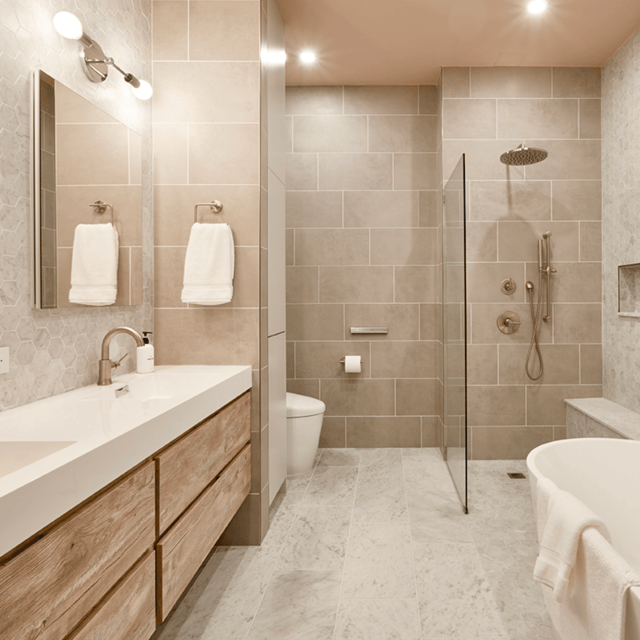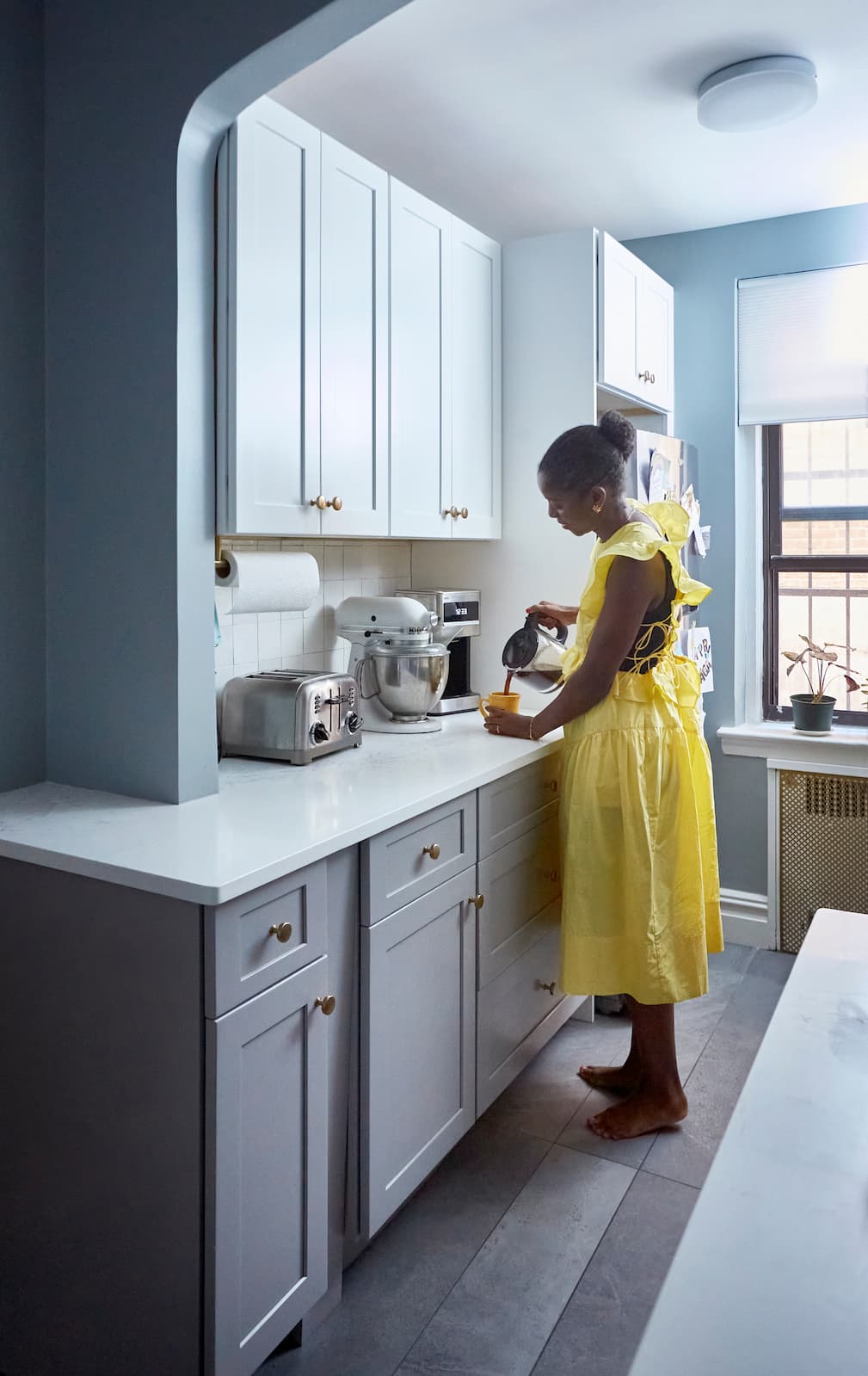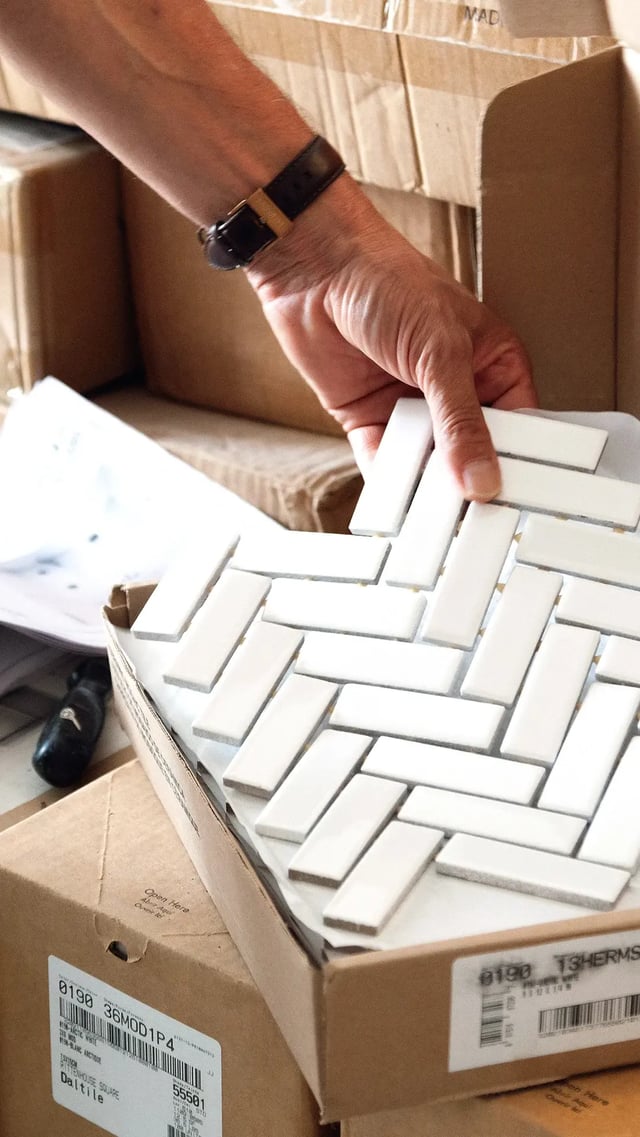
Bathroom
New York City Bathroom Remodels: Planning & Renovation Tips
12.05.2025


In This Article
Renovating your bathroom can be exciting, but it often comes with a hefty price tag. Whether simply updating a few fixtures or completely overhauling the space, you’ll need a plan to cover the costs. That’s where bathroom remodel financing comes into play. Financing your remodel is a way to make your dream bathroom a reality without straining your finances. In this guide, we’ll break down everything you need to know about bathroom remodel financing—from understanding costs to choosing the best financing option for your situation and insider tips for securing the best deals.
Renovate now, pay later
Achieve the space you're looking for today, while financing it over time with our trusted partner.*
*Not available in NYC
Learn More
Bathroom remodels can add significant value to your home and improve your and your family’s overall quality of life. However, like most home improvements, they don't come cheap. Whether you’re planning a simple refresh or a complete overhaul, it’s crucial to consider how you’ll finance the project. Remodeling your bathroom involves many different costs, including materials, labor, and potential hidden expenses. Understanding your financing options is key to staying on budget and avoiding surprises.
In this section, we’ll explore why bathroom financing is important for a bathroom remodel, the average costs you can expect, and the various factors that can influence those costs.
If you’re like most homeowners, you probably don’t have the cash to cover the entire bathroom remodel cost. This is especially true for larger projects that can run into the tens of thousands of dollars. Financing allows you to spread out the cost over time, making it easier to manage payments without having to dip into your savings or emergency fund. It also gives you the freedom to take on bigger projects and invest in higher-quality materials that you might not be able to afford upfront.
Another advantage of financing is that it can help increase the value of your home. A well-executed bathroom remodel can offer a return on investment (ROI) of 60% to 70%, making it a smart financial move in the long run. If you plan to sell your home, having a modern, updated bathroom can make your property more appealing to potential buyers and help it stand out in a competitive market.
One of the most important factors to consider before starting a bathroom remodel is the cost. The total cost of your renovation will depend on the size of your bathroom, the quality of materials you choose, and the project's scope. On average, a small bathroom remodel can range from $5,000 to $15,000, while a mid-range to upscale remodel can cost anywhere from $20,000 to $30,000. Luxury remodels that include custom cabinetry, high-end fixtures, and advanced technology features can easily exceed $50,000.
Here’s a breakdown of the average costs for different types of bathroom remodels:
Several factors can affect the overall cost of your bathroom remodel. Understanding these factors can help you create a more accurate budget and avoid unexpected expenses. Some of the most important factors include:
Now that you understand the costs of a bathroom remodel let’s dive into the various financing options available to fund your project. Whether you’re looking for a personal loan or tapping into your home equity, there are several ways to finance your bathroom renovation. Here’s the most common options:
A personal loan is a popular option for financing home renovations because it doesn’t require you to put up any collateral. These unsecured loans mean your home or other assets aren’t at risk if you default. However, since personal loans are riskier for lenders, the interest rates are typically higher than those for secured loans.
Personal loans are a good option if your bathroom remodel is on the smaller side or if you have excellent credit and can qualify for a low interest rate.
Home equity loans and home equity lines of credit (HELOCs) are both popular options for financing home improvements. These loans are secured by your home, which means you’re borrowing against the equity you’ve built up over time. Because they’re secured loans, home equity loans, and HELOCs often have lower interest rates than personal loans.
Using a credit card for a bathroom remodel might seem convenient, but it’s only viable if you tackle a small project and can pay off the balance quickly. Credit cards generally have higher interest rates than loans, so carrying a balance over an extended period can result in significant interest charges.
The federal government offers several programs to help homeowners finance home improvements, including bathroom remodels. One option is the FHA Title I loan, specifically designed for home improvements. These loans are available to homeowners with limited equity, making them an attractive option for those who might not qualify for other types of financing.
A cash-out refinance allows you to refinance your existing mortgage for more than you currently owe, using the extra cash to fund your bathroom remodel. This option can be beneficial if mortgage interest rates have dropped since you initially took out your mortgage. With a cash-out refinance, you essentially replace your old mortgage with a new one, and the difference between the old and new loan amounts is provided to you in cash, which can be used for your remodel.
Many contractors offer financing options directly or through third-party lenders. While this can be a convenient way to finance your remodel, it’s important to compare the terms offered by your contractor with other loan options to ensure you're getting the best deal.
If the more traditional options don’t suit your needs, you might want to explore other financing methods, such as peer-to-peer (P2P) lending or personal lines of credit. These alternatives often come with more flexible terms but can carry higher risks depending on the lender.
With so many financing options available, choosing the best one for your bathroom remodel might seem overwhelming. However, by evaluating your financial situation and understanding the terms of each loan, you can make an informed decision that fits your needs and budget. Here’s how to narrow down your options.
The first step in choosing the right financing option is to closely examine your financial situation. Start by asking yourself the following questions:
If you have a solid credit score and minimal debt, you might qualify for lower interest rates on a personal or home equity loan. On the other hand, if your credit score is less than stellar, you might want to explore government-backed loans or secured financing options like a HELOC.
Interest rates and loan terms vary widely depending on your loan type. Personal loans typically have higher interest rates than home equity loans or HELOCs, but they also come with shorter repayment terms and no risk to your home. On the other hand, home equity loans and HELOCs generally offer lower rates because your home secures them. When comparing loans, be sure to consider the following:
It’s a good idea to get quotes from multiple lenders and use online loan calculators to compare the total cost of each loan over time.
When choosing a financing option, it's essential to consider the additional costs beyond the interest rate. Some loans come with origination fees, closing costs, and prepayment penalties. For example, home equity loans and cash-out refinancing typically have higher closing costs because they involve your home. Be sure to ask lenders about all fees and costs before committing to a loan.
Once you’ve compared interest rates, fees, and repayment terms, calculate the total cost of financing your bathroom remodel. This includes the principal loan amount, interest, and any associated fees. By understanding the true cost of your financing, you can make a more informed decision and avoid any financial surprises down the road.
Securing a loan with favorable terms can make all the difference in managing your bathroom remodel costs. Here are a few practical tips to help you secure the best possible loan for your project.
Your credit score significantly determines the interest rate and terms you’ll be offered for a loan. A higher score can mean lower interest rates, while a lower score may result in higher rates or difficulty securing a loan. If your credit score needs improvement, take these steps before applying for financing:
Don’t settle for the first loan offer you receive. Different lenders offer different interest rates, fees, and terms, so shopping around and comparing offers is essential. Check with your local bank, credit union, and online lenders to find the best deal. Don’t be afraid to negotiate—some lenders may be willing to match or beat offers from competitors.
Remodeling projects can come with unexpected expenses and challenges, so planning carefully and avoiding common financial pitfalls is important. Here are a few to watch out for:

Written by Jordi Lippe-McGraw
Jordi Lippe-McGraw
How does a home equity loan work for a bathroom renovation?
Can I finance a bathroom remodel with bad credit?
What are the typical interest rates for bathroom remodel loans?
How much can I borrow to finance my bathroom renovation?
What is the average repayment period for bathroom remodel loans?

Renovate confidently with Block
Easily compare quotes from top quality contractors, and get peace of mind with warranty & price protections.
Thousands of homeowners have renovated with Block

4.5 Stars (100+)

4.7 Stars (100+)

4.5 Stars (75+)

Bathroom
New York City Bathroom Remodels: Planning & Renovation Tips
12.05.2025

Bathroom
Slanted Roof Bathrooms and Shower Design Ideas
11.22.2025

Contractors
50 Most Common Home Renovation Questions (Answered by Experts)
10.28.2025

Bathroom
Choosing Bathroom Fixture Finishes - Inspiration & FAQ
10.22.2025

Bathroom
Designing a 40-Square Foot Bathroom? Here’s What Actually Matters
10.22.2025
Renovate confidently